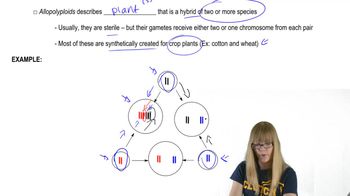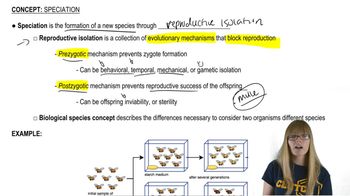Here are the essential concepts you must grasp in order to answer the question correctly.
Allopolyploidy
Allopolyploidy is a form of polyploidy that occurs when two different species hybridize and the resulting offspring have multiple sets of chromosomes from both parent species. In this case, the new allopolyploid plant species has a chromosome number that is the sum of the two parent species' chromosome counts, leading to increased genetic diversity and potential for adaptation.
Recommended video:
Hybridization
Hybridization is the process where two different species interbreed to produce hybrid offspring. This can occur between closely related species and can lead to the formation of new species, such as allopolyploids, which can have unique traits and adaptations. However, hybridization is often limited by various reproductive barriers.
Recommended video:
Reproductive Isolation Mechanisms
Reproductive isolation mechanisms are biological features that prevent species from interbreeding and producing viable offspring. These mechanisms can be prezygotic, such as temporal or ecological isolation, or postzygotic, such as hybrid inviability. In the context of the question, these mechanisms are crucial for understanding how the new allopolyploid might be prevented from hybridizing with the original diploid species.
Recommended video:
 Verified step by step guidance
Verified step by step guidance Verified video answer for a similar problem:
Verified video answer for a similar problem:

